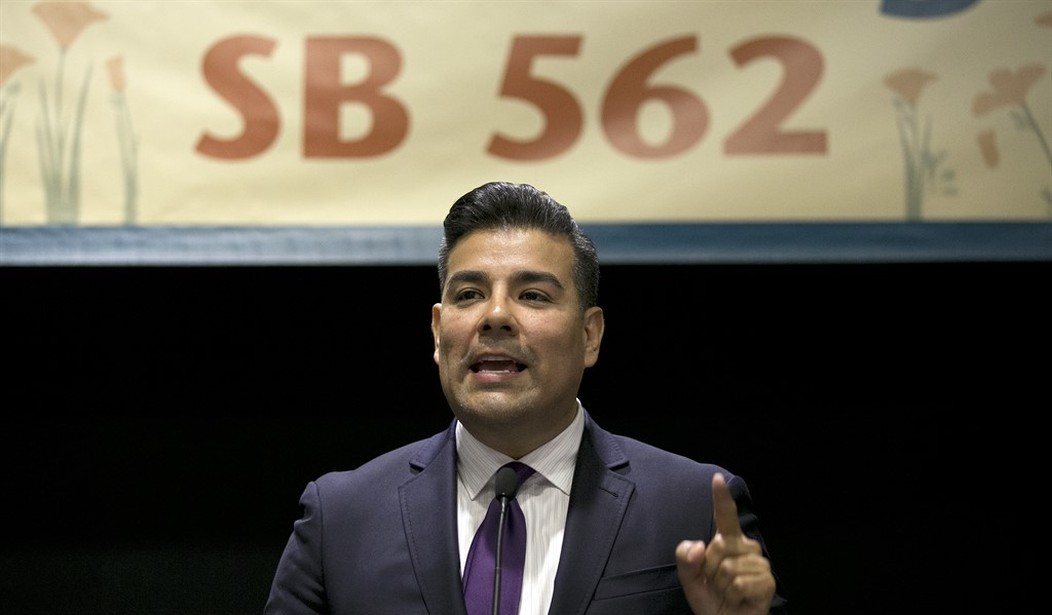And you thought House Republicans dumped a mess into the hands of their Senate counterparts with the American Health Care Act. At least Congress put together some sort of fiscal plan to fund the changes in the AHCA at the federal level. In California, supermajority Democrats in the state Senate passed aSB562, a single-payer health system law, with not even any proposals to find the $400 billion a year it will cost the Golden State.
That, by the way, is almost three times the state budget that goes into effect in four weeks:
The California Senate voted Thursday to advance a longshot single-payer health care plan that would replace insurance companies with government-funded health care for everyone in the state.
The move came even as proponents acknowledged they don’t know how to pay its huge $400 billion price tag. But supporters say the measure means big savings for families.
So why move on it now? According to the rules in the state legislature, Democrats had to play Beat the Clock to keep the bill alive:
The measure would have died if it failed to clear the Senate this week. Democrats said they wanted to keep it alive as the Assembly tries to work out a massive overhaul of the state health care system.
In other words, Democrats in the upper chamber didn’t trust themselves to pass it again … or to figure out a funding plan. That leaves their colleagues in the lower chamber to craft a funding plan that comes up with at least $200 billion a year to pay for it, and that’s only if the federal government provides a waiver to use Medicare and Medicaid funds to pay the other $200 billion a year.
It also assumes that California can properly manage a single payer system. State senator Janet Nguyen isn’t optimistic based on the state’s track record so far:
“This bill idealistically assumes California can deliver on its promise to 40 million people,” said Sen. Janet Nguyen, a Fountain Valley Republican. “Yet… the state is failing to sustain the current government-funded system, Medi-Cal, that only serves 14 million people.”
That doesn’t include failures on a variety of other programs, such as the high-speed rail system that has yet to build any length of track despite being under way for almost a decade since its 2008 approval by referendum. Or, for that matter, properly funding and reforming the state’s pension system, which is bankrupting local communities. Perhaps funding these projects should take precedence over the seizure of a major part of the economy, the resources for which the state has no idea to acquire.
Just what happens in a single-payer system to provider access? Let’s let the LA Times and USC health care economist Darius Lakdawalla provide a little fantasy-to-reality contrast:
“Doctors would no longer have to deal with…hundreds of payers,” Lighty said. “You now have a single payer who will pay reliably or swiftly.”
Depending on how the program decides to reimburse for care, that could affect how much providers get paid. Lighty said the program would likely use the same rates as Medicare, which is less than what commercial insurers pay but more than Medi-Cal.
“Imagine what will happen if physician reimbursements fell by 15 to 20%, and those same reimbursements did not fall in Washington, Oregon, Arizona — [states that] are not implementing single-payer,” Lakdawalla said. “What happens to the population of doctors practicing in California?”
The question right now is even more basic. How can advocates claim that government will pay swiftly and reliably with less red tape by adopting a Medicare model — for a system that the legislature has no idea how to fund? Insanity, thy name is California.








Join the conversation as a VIP Member